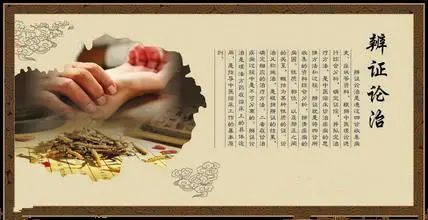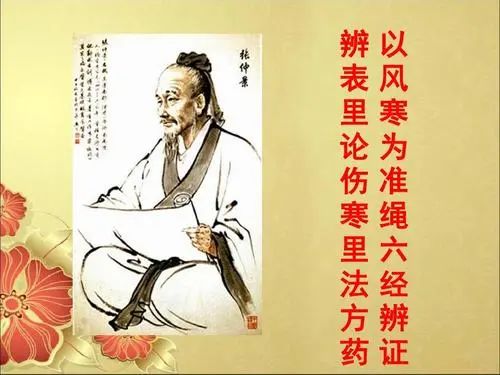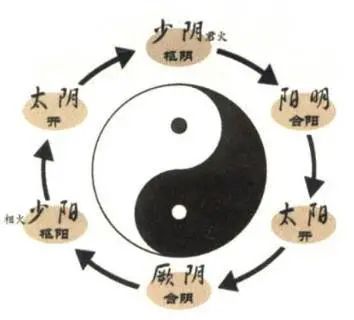 Diagnosis and treatment based on syndrome differentiation, also known as syndrome differentiation and treatment, is the process of applying principles, methods, formulas, and medicines in clinical practice. It is the fundamental principle of Traditional Chinese Medicine (TCM) for understanding and treating diseases. This includes two processes: syndrome differentiation and treatment. Syndrome differentiation refers to the comprehensive analysis of the patient’s symptoms and signs through the four examinations (inspection, auscultation, inquiry, and palpation), the eight principles (yin, yang, exterior, interior, cold, heat, deficiency, excess), organ systems, etiology, and pathogenesis to identify the type of syndrome. Treatment refers to determining the appropriate therapeutic methods based on the results of syndrome differentiation.Below, we have organized eight commonly used diagnostic methods in TCM, each with its focus and application range, broadly applied under the eight principles, representing a multi-layered systematic approach to diagnosis. We hope this provides inspiration.
Diagnosis and treatment based on syndrome differentiation, also known as syndrome differentiation and treatment, is the process of applying principles, methods, formulas, and medicines in clinical practice. It is the fundamental principle of Traditional Chinese Medicine (TCM) for understanding and treating diseases. This includes two processes: syndrome differentiation and treatment. Syndrome differentiation refers to the comprehensive analysis of the patient’s symptoms and signs through the four examinations (inspection, auscultation, inquiry, and palpation), the eight principles (yin, yang, exterior, interior, cold, heat, deficiency, excess), organ systems, etiology, and pathogenesis to identify the type of syndrome. Treatment refers to determining the appropriate therapeutic methods based on the results of syndrome differentiation.Below, we have organized eight commonly used diagnostic methods in TCM, each with its focus and application range, broadly applied under the eight principles, representing a multi-layered systematic approach to diagnosis. We hope this provides inspiration. 1. Eight Principles Diagnosis (Ba Gang Bian Zheng)The concept of the “Eight Principles” was first proposed by contemporary TCM expert Zhu Weijiu in his work “Shang Han Zhi Nan”. He stated: “The so-called Eight Principles are yin, yang, exterior, interior, cold, heat, deficiency, and excess. Ancient physicians observed various disease symptoms and categorized them into eight principles based on their differing characteristics, simplifying complexity to address endless variations.” This diagnostic method primarily analyzes the depth of the disease location, the nature and intensity of the pathogenic factors, and the strength of the body’s vital energy (zheng qi), summarizing the syndromes into exterior syndrome, interior syndrome, cold syndrome, heat syndrome, deficiency syndrome, excess syndrome, yin syndrome, and yang syndrome. The Eight Principles reflect several major aspects of contradictions in the disease process, but in clinical application, their relationships must be considered. For instance, differentiating between exterior and interior must be related to cold, heat, deficiency, and excess. Therefore, when using the Eight Principles for diagnosis, one must be proficient in the characteristics of each of the eight syndromes and pay attention to their interrelationships for flexible application. Specific methods include exterior-interior differentiation, cold-heat differentiation, deficiency-excess differentiation, and yin-yang differentiation. 2. Organ System Diagnosis (Zang Fu Bian Zheng)This method analyzes and summarizes the clinical manifestations of diseases based on the physiological and pathological characteristics of the organ systems, aiming to deduce the pathogenesis and determine the location of the disease and the state of the pathogenic and vital energies. The diagnostic basis for organ system differentiation is the abnormal physiological functions of the organs and the symptoms corresponding to the meridian pathways. Any symptoms indicating dysfunction of a specific organ can help identify the affected organ. For example, symptoms such as palpitations, anxiety, and vivid dreams should be considered indicative of heart disease; symptoms like cough, wheezing, chest pain, and hemoptysis should suggest lung disease. Therefore, organ system differentiation is the core and foundation of syndrome differentiation and treatment, commonly used in various clinical departments, especially in diagnosing internal injuries. Since the organ systems are closely related to each other and to other tissues and organs, it is essential to adopt a holistic perspective when conducting organ system differentiation, paying attention to the connections and interactions between the organs to make a comprehensive and accurate diagnosis. Organ system differentiation includes differentiating symptoms of the heart and small intestine, lung symptoms, spleen symptoms, gastrointestinal symptoms, liver and gallbladder symptoms, kidney and bladder symptoms, and combined organ diseases. Organ system differentiation is the foundation of various diagnostic methods and is core because the organs are the basic units of life activities. All diseases will affect the functions of related organs to varying degrees, and whether in internal medicine, pediatrics, or gynecology, diseases are related to organ dysfunction.
1. Eight Principles Diagnosis (Ba Gang Bian Zheng)The concept of the “Eight Principles” was first proposed by contemporary TCM expert Zhu Weijiu in his work “Shang Han Zhi Nan”. He stated: “The so-called Eight Principles are yin, yang, exterior, interior, cold, heat, deficiency, and excess. Ancient physicians observed various disease symptoms and categorized them into eight principles based on their differing characteristics, simplifying complexity to address endless variations.” This diagnostic method primarily analyzes the depth of the disease location, the nature and intensity of the pathogenic factors, and the strength of the body’s vital energy (zheng qi), summarizing the syndromes into exterior syndrome, interior syndrome, cold syndrome, heat syndrome, deficiency syndrome, excess syndrome, yin syndrome, and yang syndrome. The Eight Principles reflect several major aspects of contradictions in the disease process, but in clinical application, their relationships must be considered. For instance, differentiating between exterior and interior must be related to cold, heat, deficiency, and excess. Therefore, when using the Eight Principles for diagnosis, one must be proficient in the characteristics of each of the eight syndromes and pay attention to their interrelationships for flexible application. Specific methods include exterior-interior differentiation, cold-heat differentiation, deficiency-excess differentiation, and yin-yang differentiation. 2. Organ System Diagnosis (Zang Fu Bian Zheng)This method analyzes and summarizes the clinical manifestations of diseases based on the physiological and pathological characteristics of the organ systems, aiming to deduce the pathogenesis and determine the location of the disease and the state of the pathogenic and vital energies. The diagnostic basis for organ system differentiation is the abnormal physiological functions of the organs and the symptoms corresponding to the meridian pathways. Any symptoms indicating dysfunction of a specific organ can help identify the affected organ. For example, symptoms such as palpitations, anxiety, and vivid dreams should be considered indicative of heart disease; symptoms like cough, wheezing, chest pain, and hemoptysis should suggest lung disease. Therefore, organ system differentiation is the core and foundation of syndrome differentiation and treatment, commonly used in various clinical departments, especially in diagnosing internal injuries. Since the organ systems are closely related to each other and to other tissues and organs, it is essential to adopt a holistic perspective when conducting organ system differentiation, paying attention to the connections and interactions between the organs to make a comprehensive and accurate diagnosis. Organ system differentiation includes differentiating symptoms of the heart and small intestine, lung symptoms, spleen symptoms, gastrointestinal symptoms, liver and gallbladder symptoms, kidney and bladder symptoms, and combined organ diseases. Organ system differentiation is the foundation of various diagnostic methods and is core because the organs are the basic units of life activities. All diseases will affect the functions of related organs to varying degrees, and whether in internal medicine, pediatrics, or gynecology, diseases are related to organ dysfunction. 3. Etiological Diagnosis (Bing Yin Bian Zheng)This method analyzes and summarizes the various symptoms caused by different etiological factors invading the body, aiming to deduce the underlying cause of the patient’s illness and provide a basis for treatment. For instance, there are many causes of diseases, primarily including the six excesses (liu yin), epidemic diseases, emotional disturbances (qi qing), diet, overexertion, as well as injuries from external trauma and insects. Each etiology has different characteristics and pathogenic features, leading to various pathological changes. Understanding the patient’s history, symptoms, and signs is crucial. Specific methods include the six excesses differentiation and emotional disturbance symptom differentiation. Etiological diagnosis is a method for identifying the causes of diseases. Any disease, whether an internal injury or an external pathogenic disease, occurs under the influence of specific pathogenic factors.4. Qi and Blood Diagnosis (Qi Xue Bian Zheng)Based on the theories related to qi, blood, and body fluids, this method analyzes, summarizes, and judges the symptoms to determine the type of syndrome. Qi, blood, and body fluids are the material basis for the formation and maintenance of life activities, and their generation and function are closely related to the normal physiological activities of the organ systems. The maintenance of organ physiological functions relies on the nourishment provided by qi, blood, and body fluids. Therefore, the pathological changes of qi, blood, and body fluids are closely related to organ changes, and both complement each other. Specific methods include qi disease differentiation, blood disease differentiation, and body fluid disease differentiation.5. Meridian Diagnosis (Jing Luo Bian Zheng)This method analyzes the clinical manifestations of diseases based on the pathways of the twelve meridians and the eight extraordinary meridians, as well as the functional characteristics of the related organ systems, to determine the causes, nature, location, and relationship between pathogenic and vital energies. The meridians are pathways that circulate qi and blood throughout the body, connecting the organs and limbs, and communicating internally and externally. When external pathogens invade the body, the qi may become disordered, failing to perform its protective and nourishing functions, allowing the pathogenic factors to gradually enter the organs through the meridians. Therefore, the meridians can systematically reflect various symptoms, and based on these symptoms, one can infer where the disease occurs in the meridians, organs, and systems, further determining the nature and development trend of the disease. Diagnostic basis for meridian changes:1. Symptoms corresponding to the meridian pathways. 2. Symptoms of dysfunction in the corresponding organ systems and symptoms of qi stagnation. 3. The state of qi and blood, yin and yang in the meridians; yang excess is often associated with heat syndromes, while yin excess is often associated with cold syndromes.
3. Etiological Diagnosis (Bing Yin Bian Zheng)This method analyzes and summarizes the various symptoms caused by different etiological factors invading the body, aiming to deduce the underlying cause of the patient’s illness and provide a basis for treatment. For instance, there are many causes of diseases, primarily including the six excesses (liu yin), epidemic diseases, emotional disturbances (qi qing), diet, overexertion, as well as injuries from external trauma and insects. Each etiology has different characteristics and pathogenic features, leading to various pathological changes. Understanding the patient’s history, symptoms, and signs is crucial. Specific methods include the six excesses differentiation and emotional disturbance symptom differentiation. Etiological diagnosis is a method for identifying the causes of diseases. Any disease, whether an internal injury or an external pathogenic disease, occurs under the influence of specific pathogenic factors.4. Qi and Blood Diagnosis (Qi Xue Bian Zheng)Based on the theories related to qi, blood, and body fluids, this method analyzes, summarizes, and judges the symptoms to determine the type of syndrome. Qi, blood, and body fluids are the material basis for the formation and maintenance of life activities, and their generation and function are closely related to the normal physiological activities of the organ systems. The maintenance of organ physiological functions relies on the nourishment provided by qi, blood, and body fluids. Therefore, the pathological changes of qi, blood, and body fluids are closely related to organ changes, and both complement each other. Specific methods include qi disease differentiation, blood disease differentiation, and body fluid disease differentiation.5. Meridian Diagnosis (Jing Luo Bian Zheng)This method analyzes the clinical manifestations of diseases based on the pathways of the twelve meridians and the eight extraordinary meridians, as well as the functional characteristics of the related organ systems, to determine the causes, nature, location, and relationship between pathogenic and vital energies. The meridians are pathways that circulate qi and blood throughout the body, connecting the organs and limbs, and communicating internally and externally. When external pathogens invade the body, the qi may become disordered, failing to perform its protective and nourishing functions, allowing the pathogenic factors to gradually enter the organs through the meridians. Therefore, the meridians can systematically reflect various symptoms, and based on these symptoms, one can infer where the disease occurs in the meridians, organs, and systems, further determining the nature and development trend of the disease. Diagnostic basis for meridian changes:1. Symptoms corresponding to the meridian pathways. 2. Symptoms of dysfunction in the corresponding organ systems and symptoms of qi stagnation. 3. The state of qi and blood, yin and yang in the meridians; yang excess is often associated with heat syndromes, while yin excess is often associated with cold syndromes. 6. Six Meridians Diagnosis (Liu Jing Bian Zheng)This method, established by Zhang Zhongjing in the Han Dynasty, is primarily used for external pathogenic diseases. It is based on the general rules of occurrence, development, and changes of external pathogenic diseases (referring to diseases caused by the six excesses and other external pathogens) and their clinical manifestations, using the six meridians (Taiyang, Yangming, Shaoyang, Taiyin, Shaoyin, Jueyin) as the framework for diagnosis. It analyzes and summarizes the various symptoms exhibited during the evolution of external pathogenic diseases, considering the strength of the vital energy, the intensity of the pathogenic factors, and the urgency of the condition, to discuss the location, nature, severity, and symptom characteristics of the disease, as well as treatment principles. The six meridians serve as both the framework for diagnosis and the criteria for treatment, helping to identify inherent development patterns and internal connections, providing a basis for treatment.
6. Six Meridians Diagnosis (Liu Jing Bian Zheng)This method, established by Zhang Zhongjing in the Han Dynasty, is primarily used for external pathogenic diseases. It is based on the general rules of occurrence, development, and changes of external pathogenic diseases (referring to diseases caused by the six excesses and other external pathogens) and their clinical manifestations, using the six meridians (Taiyang, Yangming, Shaoyang, Taiyin, Shaoyin, Jueyin) as the framework for diagnosis. It analyzes and summarizes the various symptoms exhibited during the evolution of external pathogenic diseases, considering the strength of the vital energy, the intensity of the pathogenic factors, and the urgency of the condition, to discuss the location, nature, severity, and symptom characteristics of the disease, as well as treatment principles. The six meridians serve as both the framework for diagnosis and the criteria for treatment, helping to identify inherent development patterns and internal connections, providing a basis for treatment.

7. Wei, Qi, Ying, and Blood Diagnosis (Wei Qi Ying Xue Bian Zheng)This method, established by Ye Tianshi in the Qing Dynasty, is primarily used for diagnosing external warm diseases. Based on the six meridians diagnosis, it analyzes the pathological characteristics and general rules of development and changes after external warm pathogens invade the body, using the Wei, Qi, Ying, and Blood as the framework for diagnosis. It analyzes and summarizes the clinical manifestations of warm diseases to distinguish the stages of the disease, identify the location of the disease, categorize the types of symptoms, determine the pathological nature, predict the prognosis, and decide on treatment principles.The Wei syndrome primarily affects the exterior, involving the lungs and skin, with key diagnostic points being fever, slight aversion to cold, mild thirst, and a thin white tongue coating; the Qi syndrome primarily affects the interior, involving the chest, lungs, stomach, intestines, and gallbladder, with key diagnostic points being high fever at night, irritability, and a red tongue; the Blood syndrome indicates that heat has penetrated deeply into the liver and kidneys, with severe cases leading to bleeding, with key diagnostic points being burning heat, rashes, bleeding, and a red tongue.8. San Jiao Diagnosis (San Jiao Bian Zheng)This method, established by Wu Jutong in the Qing Dynasty, is primarily used for diagnosing warm diseases. It analyzes the general rules of occurrence and development of warm diseases and the characteristics of symptom changes, using the upper, middle, and lower jiao as the framework for diagnosis. It comprehensively analyzes and summarizes the various clinical manifestations during the development of warm diseases to determine the pathological stage, categorize the types of symptoms, clarify the location of the disease, establish treatment principles, and predict the prognosis.The symptoms of the upper jiao include those related to the hand Taiyin lung meridian and hand Jueyin pericardium meridian, initially presenting with symptoms of lung defense being invaded. Key diagnostic points include fever, aversion to cold, cough, mild thirst, and a floating pulse; or high fever, thirst, and wheezing with a yellow tongue coating. If the pathogen invades the pericardium, key diagnostic points include confusion and limb coldness.The symptoms of the middle jiao include those related to the foot Yangming stomach meridian, hand Yangming large intestine meridian, and foot Taiyin spleen meridian. Key diagnostic points include high fever in the stomach, excessive sweating, thirst, and a yellow dry tongue coating; in the large intestine, it presents as tidal fever and constipation, with a yellow-black dry tongue coating and a deep, forceful pulse; in the spleen, it presents as fever without sweating, wrist distension, and a slippery pulse. The symptoms of the lower jiao include those related to the foot Shaoyin kidney meridian and foot Jueyin liver meridian. Key diagnostic points include heat in the hands and feet, dry mouth and throat, fatigue, and weakness in the kidney; in the liver, it presents as finger twitching, a dry red tongue, and a weak pulse. These are the eight diagnostic methods shared, and we hope they are helpful to you.Source: Zhang Dengben, Sun Lijun, “Learning TCM Diagnosis”
These are the eight diagnostic methods shared, and we hope they are helpful to you.Source: Zhang Dengben, Sun Lijun, “Learning TCM Diagnosis” Scan to add the teacher’s WeChat
Scan to add the teacher’s WeChat Learn TCM, understand skills, promote health, and enhance the culture of traditional Chinese medicine.
Learn TCM, understand skills, promote health, and enhance the culture of traditional Chinese medicine.

